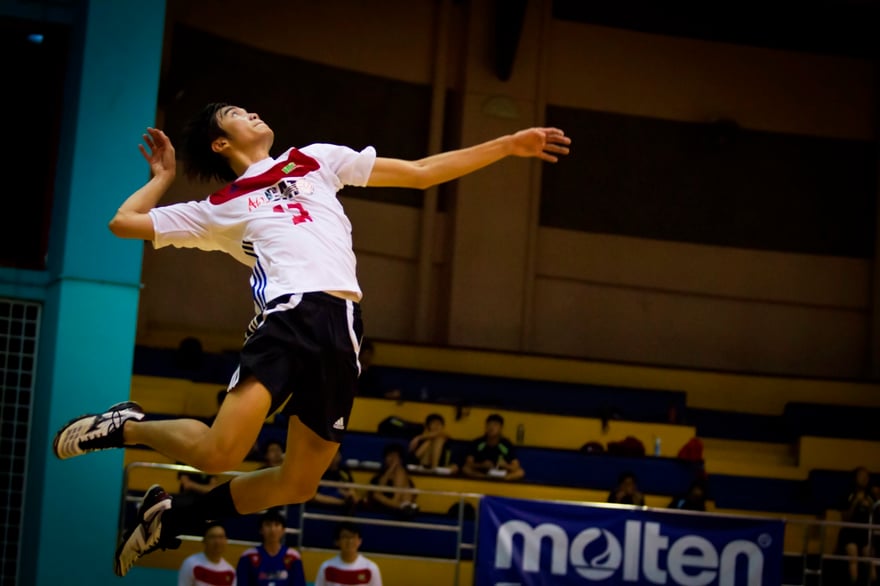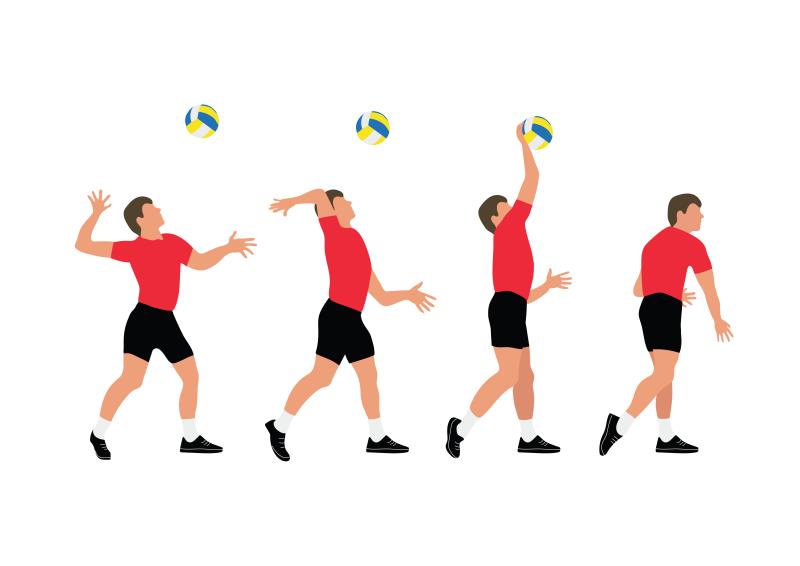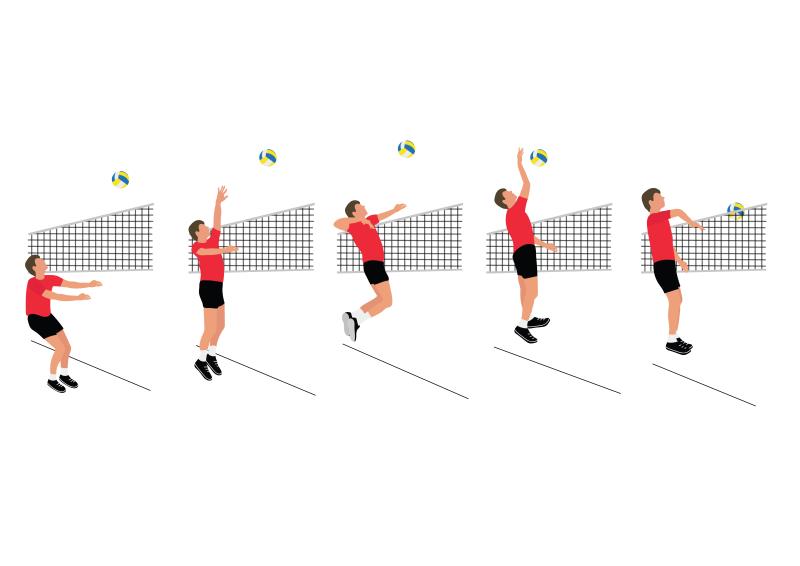Skills needed in Volleyball

Image credit: Calvin Teoh/SportSG
Volleyball is a sport comprising of specific skills, like serves, passes, sets, blocks, attacks and digs. Each skill can be used to attack or defend depending on game play.
Below are a few volleyball techniques with explanations on how they can be executed.
Float serve - A type of serve that does not spin and moves unpredictably in a floating fashion.

Image credit: SportSG
- Hold the ball in your left hand. Prepare to toss the ball in the air.
- Lift your left hand to toss the ball and ready your right hand to hit the ball with your palm. Make sure your hitting hand is held firm and stiff.
- Strike the middle of the ball with the palm of your hand as it comes back down after the toss.
- Pull your hand back immediately after the strike. Do not follow through with the momentum of the hit.
Forearm pass - Join your arms from the elbow to the wrists and strike the ball with the fleshy part of your forearms via an underhand motion.
- Relax your shoulders and spread your feet slightly wider than your shoulders.
- Straighten your arms and grip your hands together to create a flat contact surface from wrists to elbows.
- Bend your knees at this point to around 90 degrees with one foot slightly in front of theother.
- Keep your arms at a 90 degree angle to your thighs, with your back straight as you leanforward slightly.
- Swing arms forward and upward to contact the ball via your forearms at a point slightlyabove your wrists.
- Follow through on the momentum with your body.
Overhead set/pass - A set/pass played above the forehead, executed with both hands open, and controlled by the fingers and thumbs.
- Prepare your body by bending your knees and leaning forward slightly.
- Extend your arms over your head, with your thumbs about 2-4 inches above your forehead.
- Face your palms outwards with fingers spread apart.
- As the ball approaches, push upwards, straightening your arms and legs. Use only your fingers to contact the ball.
- Extend your hands forward in the direction you want the ball to go.
- Pull back once contact is made.
Offensive block / Roof - An offensive move made by a defensive player such that the ball deflects straight to the floor on the attacker’s side.
- Move in near the net from any outside position. When in front of the net, hips and shouldersshould be square to the net. Your feet should be slightly wider than shoulder-width apart.Bend your knees slightly, so you can move quickly if the ball direction changes.
- Hold up your arms, with elbows out and palms facing the net at about eye level.
- When the opponent attacks, lock in on the ball's position.
- Jump with arms straightened up and fingers widespread.
- Block the ball by shooting your hands over the net. Leave as little space between your arms and the top of the net as you can
Jump attack / Spike - A move where the ball is contacted with force by an offensive player to terminate the ball on the opponent’s side or off the opponent’s blocker.

Image credit: SportSG
- Start your approach towards the net. As you prepare to jump, bend your knees and extend your arms downwards and backwards.
- Jump right before the attack line and swing your arms up in front of you.
- Try to get an arch in your back to provide more power.
- Extend your hitting hand straight out in front of you.
- Contact the ball with the heel of your open hand.
- Snap your wrist downward to give the ball top spin and direct the ball into the opponent's court.
Dive - Recovering a spiked ball when it is close to the floor.
- Stand with your legs apart, slightly wider than shoulder width.
- As the ball approaches, take a step forward and lunge with arms together.
- Deepen the lunge as the ball gets lower. Shift your body weight to your bent leg.
- Move forward leading with the bent knee till you are almost lying down.
- Extend your arm to contact the ball, keeping the ball in play.
To receive the latest updates on the happenings in the Singapore sports scene, or to find out more about some of the latest programmes on offer at ActiveSG, like our Facebook page here.





![ActiveSG Academies and Clubs Logo (Solid Colour)[8647]](https://www.activesgcircle.gov.sg/hs-fs/hubfs/ActiveSG%20Circle%202023Theme/images/ActiveSG%20Academies%20and%20Clubs%20Logo%20(Solid%20Colour)%5B8647%5D.png?width=150&height=65&name=ActiveSG%20Academies%20and%20Clubs%20Logo%20(Solid%20Colour)%5B8647%5D.png)



-01.png?width=200&height=141&name=Team%20Singapore%20Logo%20(Red)-01.png)



